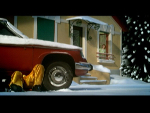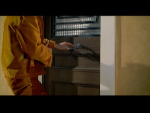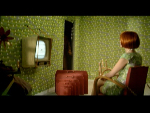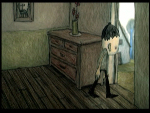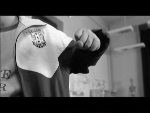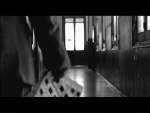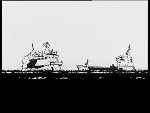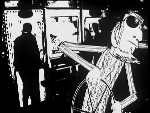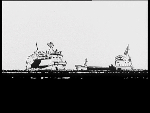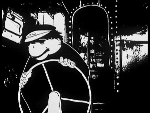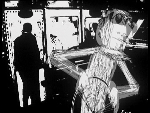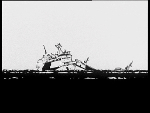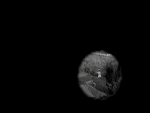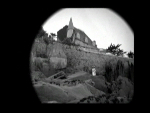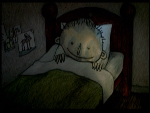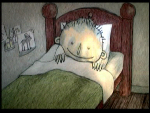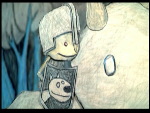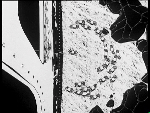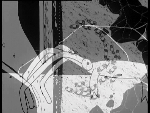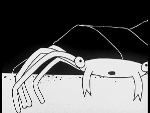Edits and Transitions
Edits and Transitions
To quickly recap, a film is multi-layered narrative composed of a series of ‘shots’ (or ‘clips’) that combine:
- Moving images (action)
- Sound
- Music
- Dialogue
- Titles, inter-titles, graphics and other text on screen
The narrative can be driven either by a narrator or presenter as in many types of documentary or what the characters do.
Though it is easy to see how a narrator can control and explain the flow of images in factual films, drama uses the pictures and sounds – and the audience’s natural curiosity - to pull the viewer through the film. Each ‘shot’ reveals information about what is going on – but crucially also sets questions or builds expectations that are answered, or partially answered, by the next ‘shot’.
Editing and Narrative
So, when we are talking about editing, we are not simply talking about the work of the editor whose job it is to assemble and fine-tune the film, but the logic of the shots and the flow of the narrative that will have been planned from the screenwriting and storyboarding phase.
Cuts and transitions are the equivalent of written punctuation in films. As camera movements are equivalent to commas, semi-colons and colons, cuts are the equivalent of full-stops, paragraph breaks and chapter breaks that provide real narrative structure.
Edits / Cuts
Passive match cut: the editor uses the audience’s curiosity about a specific aspect of the scene to motivate a logical bridge to the next clip (e.g. the silhouette of a man’s face is seen; cut to a medium close-up of his face from another angle to tell us who he is).
Active match cut: the editor cuts on the most compelling usually obvious question to pull us through the narrative at pace, e.g. a man pulls out a gun and looks ahead - we wonder who he is going to threaten - cut to the terrified face of the cashier. Most often these cuts are from action to action (see below); however, they can also be from scene to scene in a logical sequence (e.g a man crosses the finish line - we wonder if he has won - cut to the stadium's big screen for the action replay).
Jump cut: a cut that excises time or space to focus the viewer’s attention even more keenly on the narrative or to remove unnecessary distractions. For example, why show someone getting into a car? Simply show the person leaving the house, then the mum waving goodbye, then the car driving away).
Cutaways: cuts to new lines of action that are used to increase suspense by showing the approach of an interloper. They are equivalent to a paragraph break and are often accompanied by a change in music.
Cross-cut: often used in action or romance films to cut quickly between two or more lines of action in action sequences or to move between separated characters as they go about their separate business in a romance sequences. (N.B. The use of the cross cut suggests that at some point soon the two lines of action will converge or collide.)
Sound Bridges: link disparate images or weld the audiovisual experience by creating a unified sound beneath disparate images. Generally these are divided into visual breaks that come before a sound break, ('J cuts'), and sound changes that come before a visual break ('L cuts').
Musical montage sequence: aka a series of shots to music. Soundscapes and music are used to help unify longer sequences of clips, e.g. the clichéd series of shots used to show two characters falling in love.
Music cuts: alert the viewer to the introduction of a new character within a scene, or a change of chapter or a new sequence so that we are not confused (they tell us that though we don’t recognise or understand the image yet, we will very soon).
Title cards: aka inter titles. Text on screen which helps bridge spatial, temporal and logical gaps in the action.
Voice-over: a narrator can be used helps bridge spatial and temporal gaps in the action.
Transitions
Fade in: aka fade up, where the frame is lightened from black.
Fade out: aka fade to black. Show the picture dissolving and then reforming; are often used to signify a flashback or dream sequence (as in the example below).
Cross-fade: the image of one frame fades into the image of the next frame.
Wipe: shot A replaces shot B by means of a boundary line moving across the screen; wipes one image away while bringing about a new one.
In addition to the types of deliberate cuts and transitions, editors also need to consider the length of the clips and sound elements that they use as these will also influence the pace and rhythm of the completed film.
